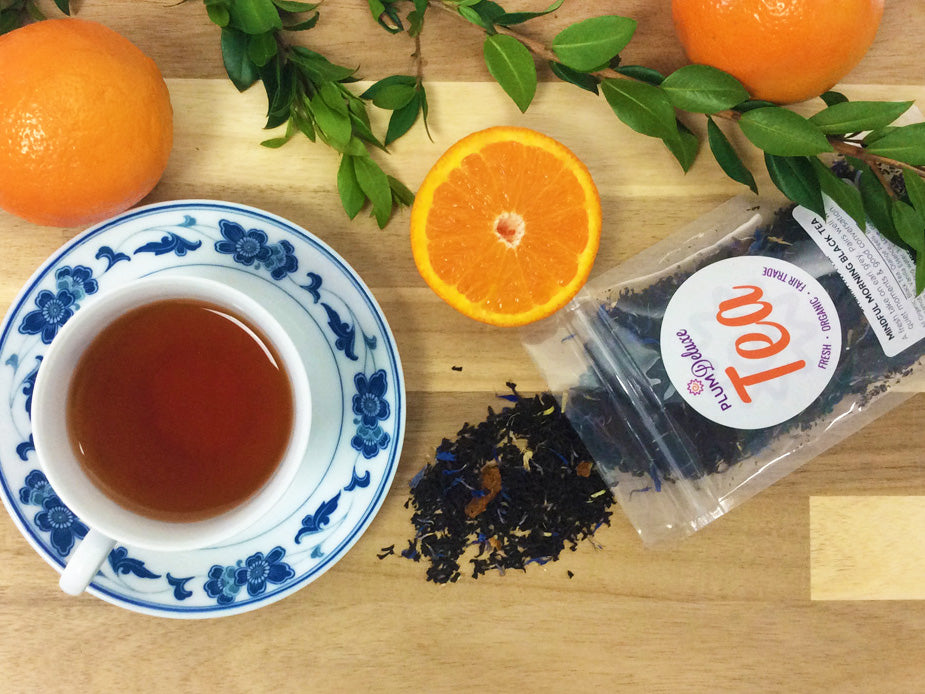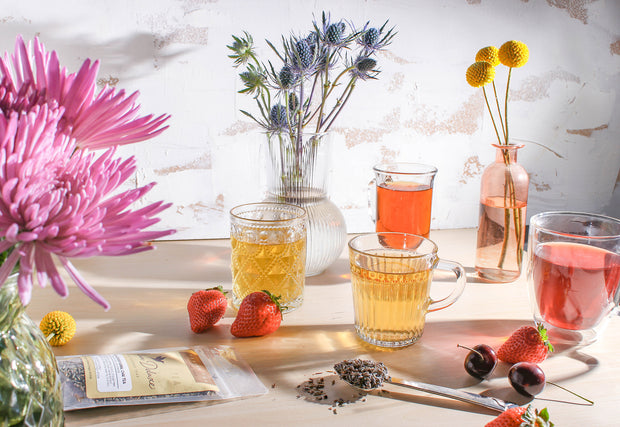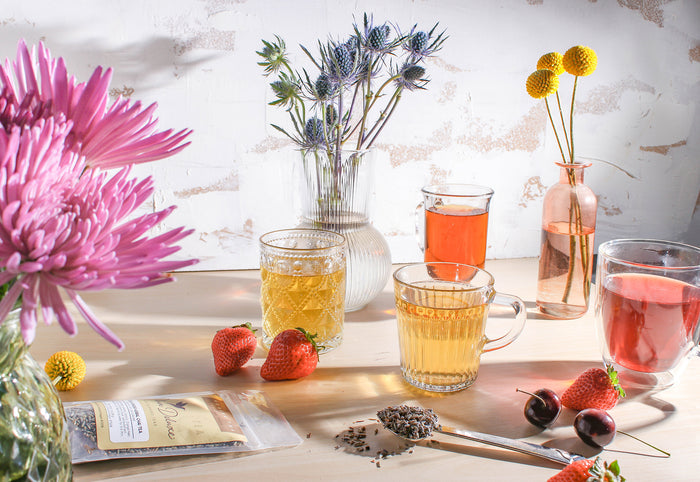Earl Grey tea has become a classic, ubiquitous at tea parties and overflowing with variations. As we at Plum Deluxe celebrate Earl Grey Month every June, I thought it would be fun to dive into the history of this most notable of Western tea blends and find out exactly who was Earl Grey.

What Is Earl Grey Tea?
Simply put, Earl Grey is any tea flavored with bergamot, an oil extracted from the rind of bergamot oranges grown in Calabria, Italy. After that, the varieties are virtually endless, with the addition of other fruits, flowers, and even green or herbal teas. For example, French Earl Grey has rose petals, Russian Earl Grey includes lemongrass, and Lady Grey boasts the addition of Seville oranges.
We carry six versions at Plum Deluxe: Mindful Morning, an Earl Grey with vanilla; Delightful Morning, an Earl Grey with lavender; the Gratitude Blend, an Earl Grey with strawberry; Creme Brulée Earl Grey with creamy vanilla notes and jasmine flowers; Queen's Blend green tea Earl Grey with lemon and vanilla; and the caffeine-free herbal Healthy, Wealthy, & Wise with bergamot, sage, and lemongrass. (And check out our experimental Earl Grey blends, available only during Earl Grey Month in June!)

Who was Earl Grey? History and Rumors
Okay, but who is this Earl guy, anyway? Charles, the second Earl Grey (1764-1845), was the British Prime Minister from 1830-1834. His most notable political achievements include the Reform Act of 1832 and the Slavery Abolition Act of 1833, yet he is most well known throughout history for the tea bearing his name.
Stories abound of how Charles became connected with the now-famous tea. Some say he saved the life of a Chinese mandarin (or the mandarin’s son) and was given the tea as a gift -- except he never went to China, throwing a wet blanket over that idea. Others speculate that the tea was given to Lord Grey as a gift for opening tea trade routes by abolishing the East India Company’s monopoly on tea imports. According to Grey family lore, the tea was blended by a Chinese mandarin especially for Lord Grey, with bergamot oil to compensate for lime in the water at Howick Hall in Northumberland.
It is perhaps more likely that Grey at some point either purchased or was given a high quality Chinese tea that, when it had run out, he had replicated with the addition of bergamot oil. In England at the time, it was not uncommon for cheaper teas to be flavored with bergamot in an attempt to imitate more expensive Fo Shou and Qimen (Keemun) teas from China. The fact that it may also have helped balance the flavor of minerals in the local water would have been a bonus.
As for its fame, Earl Grey’s mixture was supposedly used by Lady Grey when entertaining in London, which is how it became so popular.

Everyone Wants the Earl
In the almost two centuries since, there has been something of stir amongst tea companies over who has the original recipe to Earl Grey tea. Jacksons of Piccadilly claim Charles Grey gave the original recipe to Robert Jackson & Co. partner George Charlton in 1830 -- although advertisements for Earl Grey tea do not appear until the 1880s.
Richard, the sixth Earl Grey (1939-2013), lent his endorsement and signature to Twinnings; it is his signature that appears on boxes of Twinnings’ Earl Grey tea. They also have a trademark on “Lady Grey.”
Finally, the East India Company has put in a claim, saying theirs is the original recipe, but with neroli oil (from bitter orange) instead of bergamot (from Calabrian orange).
In the end, no matter where it came from or who actually holds the original recipe, the fact remains that Earl Grey tea is a classic blend, versatile and well loved. And we can all drink to that!

!['Chocoholic' Chocolate Tea Variety Pack [6-Pack Variety of Flavors]](http://www.plumdeluxe.com/cdn/shop/files/2.01-1800x1800-PlumDeluxe-DAJ-274695.jpg?v=1736886689&width=165)
![Patisserie Dessert Tea Variety Pack [6-Pack Variety of Flavors]](http://www.plumdeluxe.com/cdn/shop/files/4.01_-_1800_x_1800_-_Plum_Deluxe_-_DAJ_-_274695.jpg?v=1736886720&width=165)















